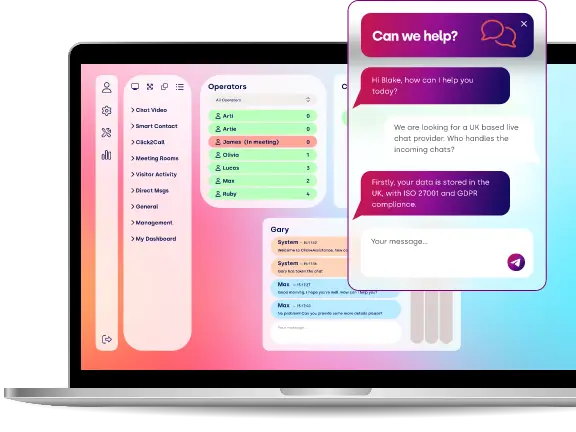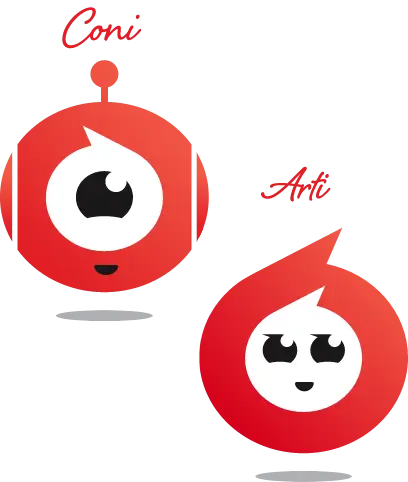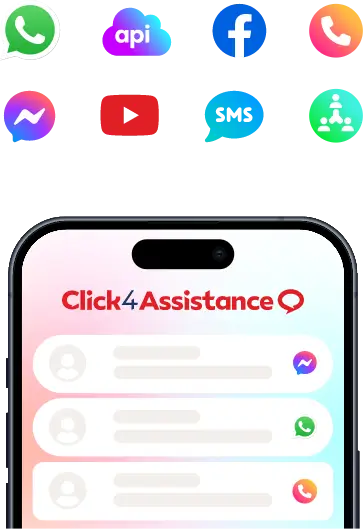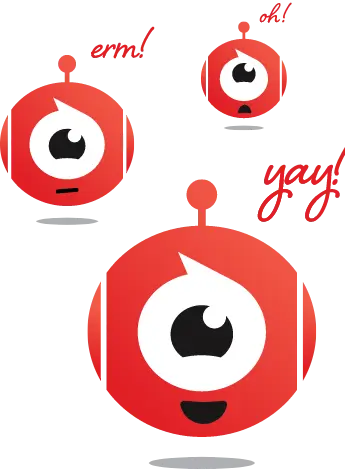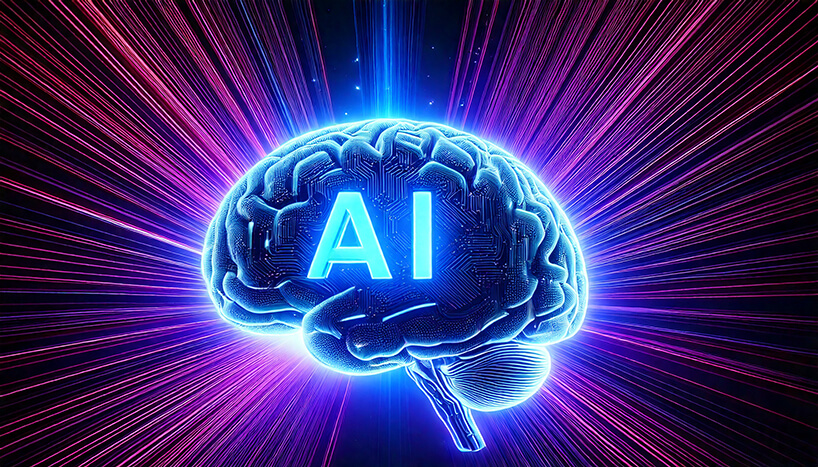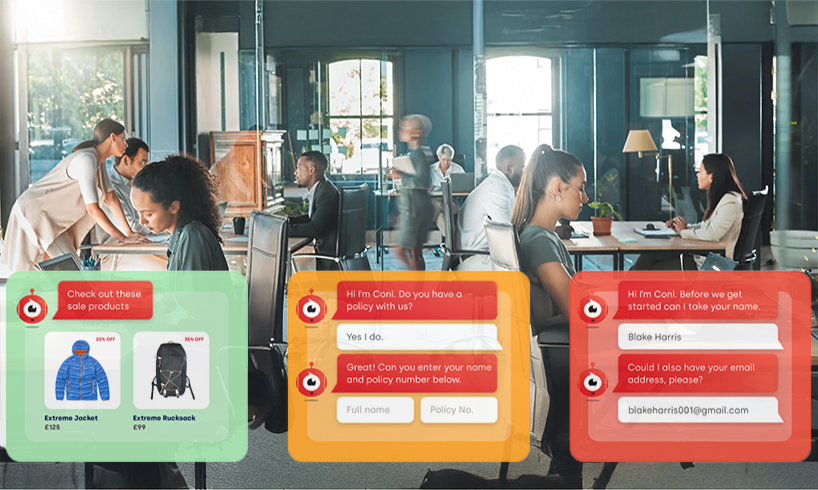The next evolution in AI chatbot software

AI chatbot software continues to surprise businesses with its capabilities and human-like performance. Discover the latest developments in the technology and its customer service uses here.
Since November 2022 and the release of ChatGPT we’ve all become accustomed to human-like chatbots. These solutions can reply to any question (unless you ask something naughty), answering in paragraphs that sound as if they were written by a Harvard post-grad with a 150 IQ.
For many observers, it seemed like a high watermark. The technology had made such a massive leap that the idea you could improve it from there seemed impossible.
But over the last 20 months, that’s what’s happened. Open AI, Anthropic, Google, and other leaders in the space have all been busily beavering away in the background to take their bots to the next level.
The latest developments in chatbot technology
This evolutionary process began in earnest after OpenAI released its blockbuster bot. During 2023, there was a frantic scramble by Microsoft, Google, and other tech giants to come up with some sort of response to the breakthrough technology. Companies knew it was the future and could no longer allow AI to sit on the test bench.
Google and Microsoft quickly got into the market releasing Bard (now Gemini) and Bing AI. These solutions weren’t as capable as ChatGPT back then but revealed the technology was industry-wide.
This competition led to massive investment in improving bot technology throughout 2023. Open AI made various strides, including adding voice capability to its software.
For example, in January 2023 (just two months after launch), Open AI made “general model improvements” to ChatGPT. Updates made the tool faster and more factual in its responses. (Hallucinations were a significant issue in the early days). The company also added a “stop response” feature after users complained about waiting for the bot to respond to dud prompts.
March 2023 saw the arrival of ChatGPT 4.0, an even more advanced version of the tool. It could do new things like provide recipe instructions from food photos and process up to 25,000 words in a single prompt – over eight times as many as ChatGPT 3.5.
Three months later in July, Open AI added some logic improvements to the tool. The changes meant ChatGPT got better at working out maths problems and inferring information from statements in prompts.
At this point, AI legend Geoffrey Hinton began suspecting large language model (LLM)--based chatbots were more than fancy predictive text algorithms. He argued AI had a theory of mind and was capable of making logical inferences.
From September 2023, Open AI began championing ChatGPT’s “multimodality” – or the idea that it could accept prompts and give responses in non-written formats. The company announced the tool could “see, hear, and speak,” bringing it closer to the AI HAL in 2001: A Space Odyssey. DALL-E 3 arrived a month later in October and became part of ChatGPT Plus, letting users create images with prompts.
The latest iteration of the model, ChatGPT-4o, arrived in May 2024. The tool can reason across audio, visual and text in real-time, making it a powerful assistant for everyday life.
Compared to GPT-4 – the company’s previous flagship LLM – ChatGPT-4o offers faster response times and is more computationally efficient, costing 50% less than its predecessor. It also has vastly improved performance in non-English languages, allowing it to switch between Arabic, Urdu, Gujarati and Mandarin, regardless of linguistic or text input. Systems can analyse and explain visual content, and the DALL-E 3 integration makes image generation a native feature.
Unlike most chatbots, users can interact with ChatGPT-4o in real time. The software uses multiple models and processing units to interpret spoken words and offer responses at the speed a human would. Interestingly, the bot will stop talking when you interrupt it with a follow-up question. This feature improves the chat-based interface where interruptions have no effect, making the dialogue more natural and human-like.
When Open AI launched ChatGPT-4o, it released a teaser video revealing the spectacular capabilities of the new model. The clip features an engineer asking the bot what it sees around it and how it might interpret the situation. The AI correctly guesses he is filming a video, perhaps live-streaming about Open AI’s new artificial intelligence technology.
What’s so remarkable about the interaction is just how much ChatGPT-4o understands the situation. The model can parse visual and spoken inputs and combine them with LLMs to generate smarter answers.
The voice it generates to respond also has a human-like intonation. When ChatGPT-4o says “The announcement is about me?!” in the clip, you can hear its surprise and excitement about the prospect, revealing itself as a true conversational agent.
Open AI says that ChatGPT-4o can react to audio inputs down to 232 milliseconds (averaging 320 milliseconds) making its responses almost as fast as a person’s. By comparison, voice mode responses on GPT-3.5 took 2.8 seconds, while on GPT-4 they took 5.4 seconds.
Visual interpretation of the environment is slower, but still within acceptable boundaries. Panning a camera connected to ChatGPT-4o and showing it an environment takes a few seconds, but the software can usually guess where you are and what you might be doing.
The connection between audio, visual and text inputs is what truly sets the new system apart from everything else Open AI has introduced before. All inputs go through the system’s neural network (similar to a human brain), giving it a more holistic understanding of its environment and what users want it to do.
Evaluations show ChatGPT-4o achieves similar performance levels across text, reasoning and coding intelligence as GPT-4 Turbo, the industry-leading model. However, it does significantly better than the competition on MATH, GPQA and HumanEval scores (indicating superior inference and utility).
Apple recently saw its share price rocket on news that GPT-4o would power Siri on its devices. The AI assistant will improve the existing (low-performance) technology, enabling the phone maker to reassert itself as the dominant market leader after several lacklustre years.
How live chat providers can harness this technology for client business communication
Businesses have been using various AI chatbots in customer service for some time. However, the technology never felt human-like. Automated systems often made mistakes in the past or simply got stuck when they didn’t know what to do next.
But these latest developments from Open AI and others are a step-change in capabilities. As such, they could improve SaaS live chat considerably.
Multilingual Support
For example, advanced AI technology is facilitating genuine multilingual support. Bots can understand inputs in any language and respond with native outputs.
ChatGPT-4o provides an example of this in practice. It can talk to users in Tamil, Persian, Russian, Korean, Hindi, Japanese and Turkish, using non-Latin characters.
International companies can leverage this technology to bridge communication barriers with global clients. Customers can get approved answers in their native tongue without needing translators.
Faster Responses
New technology will also facilitate faster responses. As mentioned, bots will converse naturally, reducing input and response delays.
The ability to interrupt the bot during spoken conversations also matters. Users can clarify their questions and responses without waiting for the chatbot to say its piece.
Automated Responses
Automated responses are another way businesses can leverage chat technology. For instance, ChatGPT-4o can answer FAQs and provide more nuanced responses to non-standard questions. Systems can absorb contextual information to offer customers more helpful assistance when they get stuck.
For example, electronics companies could use new chatbots to assist with troubleshooting. Users could describe the details of a problem and AIs could recommend the solutions most likely to resolve the issue.
Real-Time Knowledge Access
Related to this last point, bots like ChatGPT-4o could also provide real-time knowledge about the business or its brand similar to the computer on the Star Trek Enterprise. Users could ask machines anything and get a specific, company-approved answer if trained.
For example, health insurers require patients to talk to human representatives to book treatment. After an initial GP referral, patients must phone or text chat to make a claim or get a pre-authorisation.
However, a ChatGPT-4o-like chatbot could manage this interaction itself. Customers would simply forward relevant information (such as referral letters) and the chatbot could access their policies to see if they qualify for treatment and how much the excess will be.
Sentiment Analysis
You can also imagine chatbots like ChatGPT-4o getting better at analysing customer sentiment. Bots could watch for trigger signs or warning phrases and attempt to de-escalate to improve the customer experience. Their emotion-free approach means they could manage the sharpest criticism and angriest customers without getting involved. Such an approach would improve professionalism and reduce complaints.
Content Generation
Advanced chatbots could also generate relevant content for users as the conversation proceeds to streamline the interaction. This might include:
- More relevant ads or product mentions
- Descriptions of specific concepts and what they mean
- Native-language text or audio for ease of understanding
What the impact will be on the future of customer service and conversational AI chatbots?
The impact of these nascent technologies will likely be significant. Employees, customers, and executives all stand to benefit.
Reduced Wait Times
A reduction in how long people have to wait to get service is one obvious benefit. Solutions like ChatGPT-4o and others can handle and respond to multiple users’ queries in real-time, reducing the need to hold the line for a human. These rapid responses can improve brand perception.
Constant Availability
The fact that chatbots are always available is another perk. Users don’t need to wait until office hours to communicate with them. Unless there is maintenance, most remain available twenty-four-seven, including at the weekend.
This impact is most considerable for businesses whose customers are usually only available outside office hours. Chatbots can take bookings and troubleshoot at any time, not just when you are open.
Natural Conversations
The latest wave of chatbot technology will also make natural conversations more feasible than in the past. Previously, callers and texters had to adapt to the bot's limitations to get value from it. But now natural language processing reduces this requirement and lets people enjoy more human-like conversations.
Bots may even provide personalised conversations based on past interactions. Currently, humans do this using CRMs, but chat tools can hold entire previous dialogues in their memories, letting them call on any information they feel would be pertinent to the conversation.
Reduced Bias
Depending on the training, you could also see chatbot advances reducing bias. Bots could treat everyone more equally (regardless of background), permitting a more consistent service.
Other impacts
Other impacts of conversational AI chatbots on the future of customer service include:
- Automation of various tasks, including taking orders, scheduling appointments, processing returns, and troubleshooting simple problems
- Improvements in meeting data privacy targets (some interactions may not require any direct access to customer data by employees)
- More focus on being empathetic (chatbots never get tired and can deal with challenging customers all day without a break)
- More user control over how the AI chatbot uses their information (this is trickier for human reps who can always talk about their experiences with customers to other people)
- Job augmentation, where AI chatbots continue to filter more complex tickets to human responders
Wrapping Up
Software like ChatGPT-4o brings a new level of sophistication to live chat services for business leaders. The technology is almost human-like in its approach and response to the world, making it vastly more capable than the bots of yesteryear.
Furthermore, it is only a matter of time before businesses start leveraging its capabilities. Future chatbots could converse with customers more naturally and solve more of their problems in real-time, no matter their language or issue.
Already, brands like Apple are integrating the latest technologies into their products. Businesses will soon do the same for their contact centres, enhancing customer service by making it faster and more useful, personalised, and efficient. The impact on the entire business community will be tremendous.
